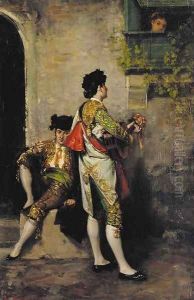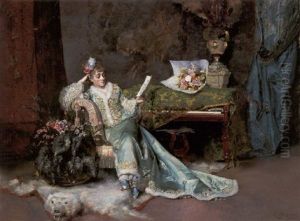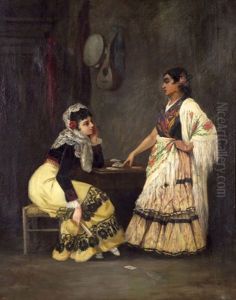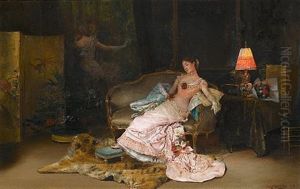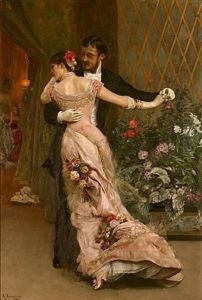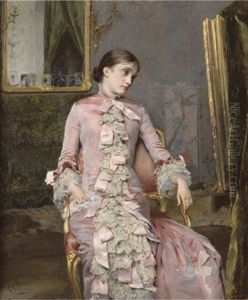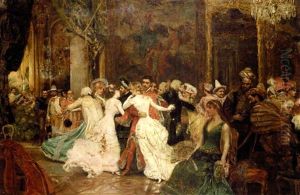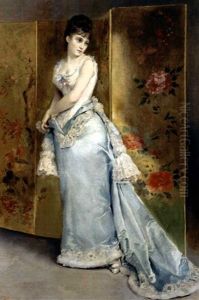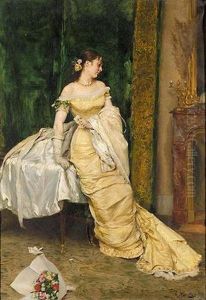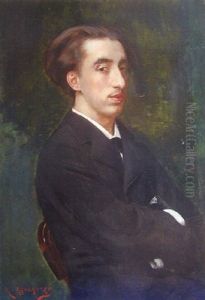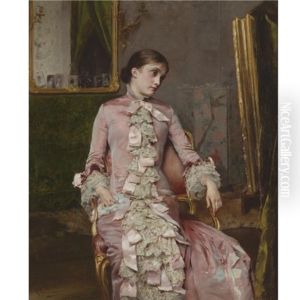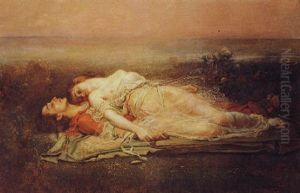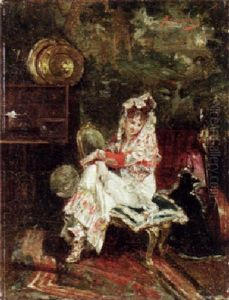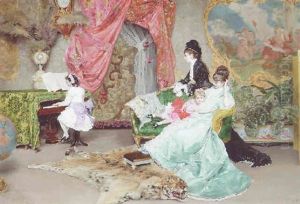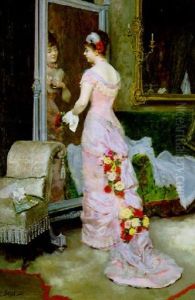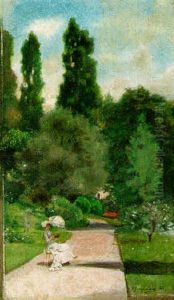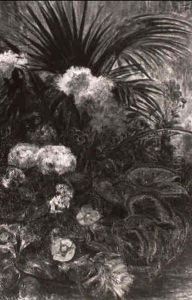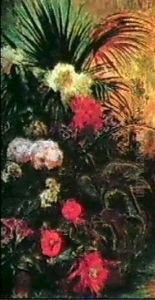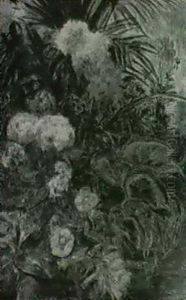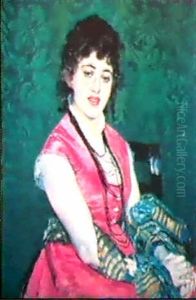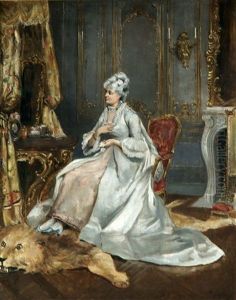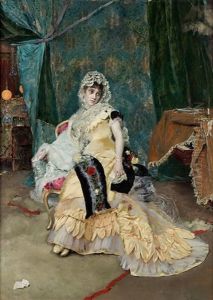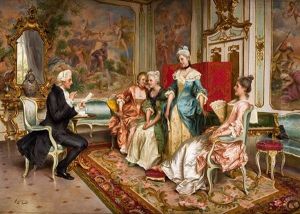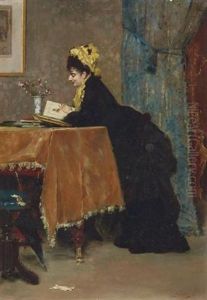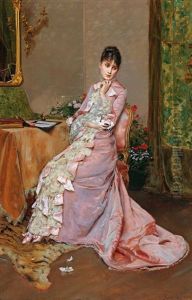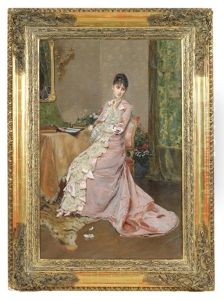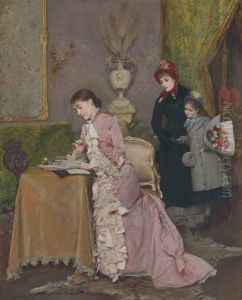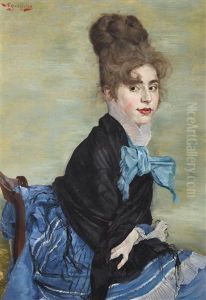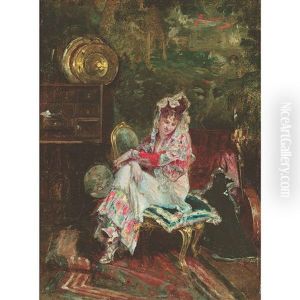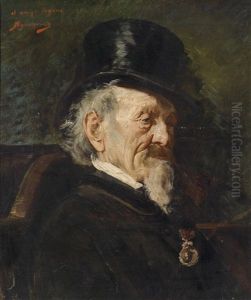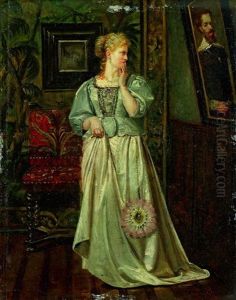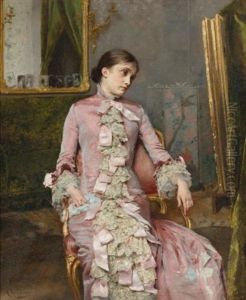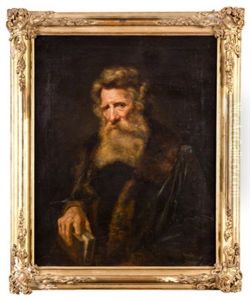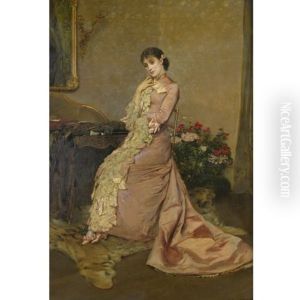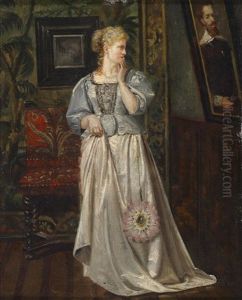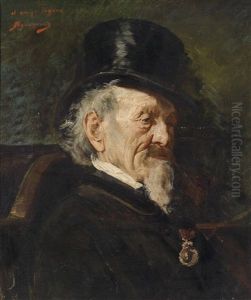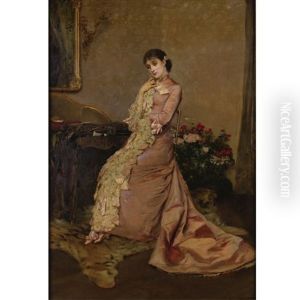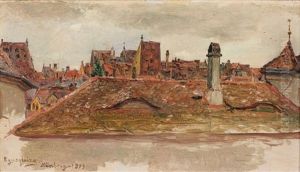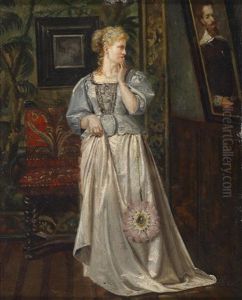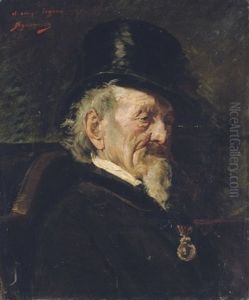Rogelio De Egusquiza Paintings
Rogelio de Egusquiza, a notable figure in the world of 19th-century Spanish art, was born in Santander, Spain, in 1845. His artistic journey began at the Royal Academy of Fine Arts of San Fernando in Madrid, where he honed his skills and developed a profound understanding of classical and contemporary art. Egusquiza's work is emblematic of the Symbolist movement, which sought to express the mystical, emotional, and imaginative aspects of human experience, diverging from the more observable and tangible subjects favored by Realism and Impressionism of the same era.
After his studies in Madrid, Egusquiza moved to Paris, which was then the epicenter of the art world. In Paris, he became deeply influenced by the music of Richard Wagner, which had a profound effect on his artistic direction. Egusquiza's fascination with Wagner's compositions is evident in numerous works that visually interpret the music and themes of the German composer's operas. This unique blend of visual art and music set Egusquiza apart from his contemporaries and solidified his place in the Symbolist movement.
Throughout his career, Egusquiza maintained a close relationship with the artistic and cultural circles of Paris, while never losing touch with his Spanish roots. His work often featured themes of mysticism, mythology, and the ethereal, showcasing his mastery of light, color, and form. Egusquiza's contributions to the art world extend beyond his Wagner-inspired pieces; he was also acclaimed for his portraits, landscapes, and studies of the human form, demonstrating versatility and depth as an artist.
Rogelio de Egusquiza's legacy is that of a visionary who bridged the worlds of music and visual art, creating a body of work that continues to captivate and inspire. His death in 1915 marked the end of a prolific career, but his influence persists, underscoring the enduring relevance of Symbolism in the broader context of art history. Egusquiza's artistic achievements are celebrated in museums and collections around the world, serving as a testament to his innovative spirit and his contribution to the Symbolist movement.
